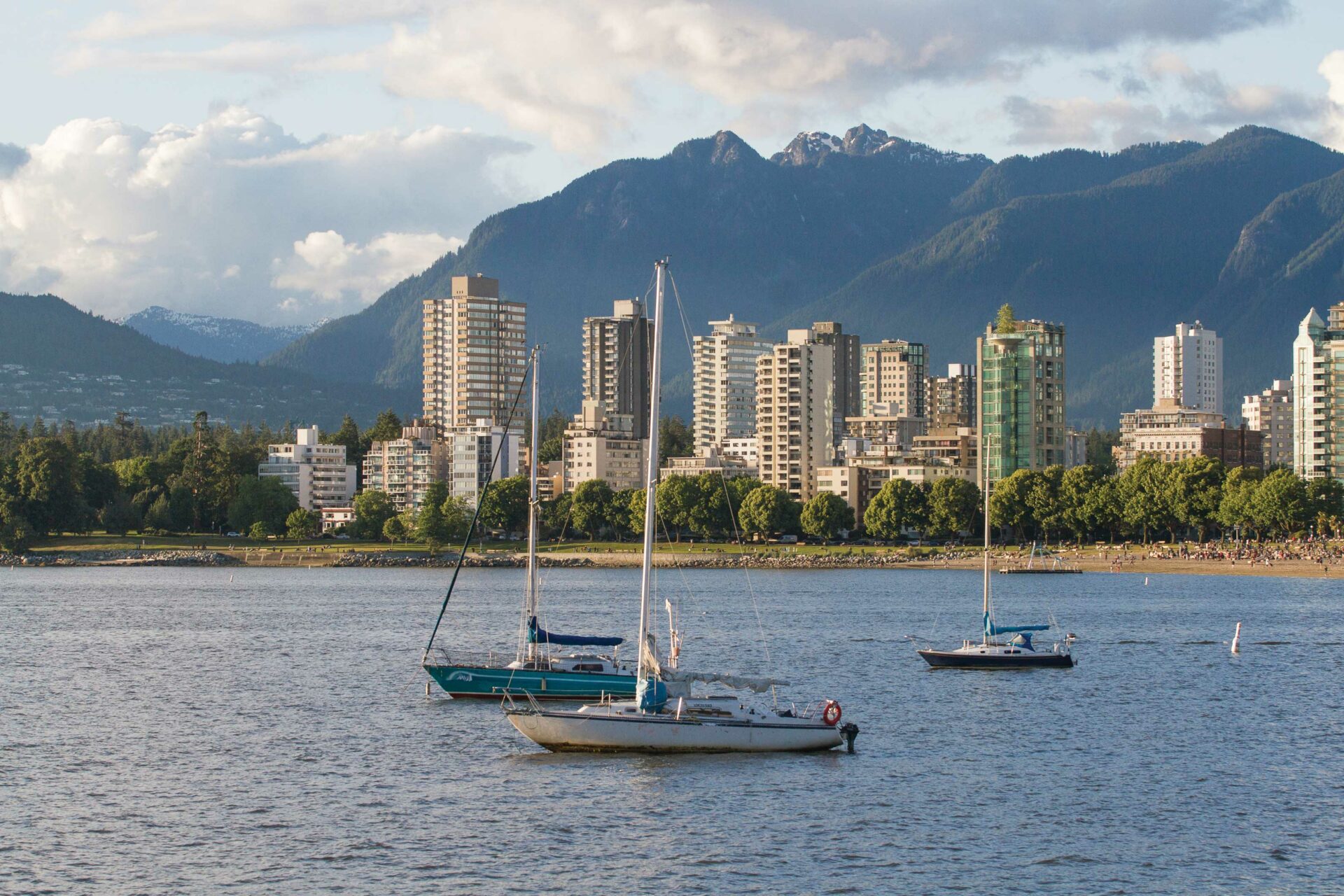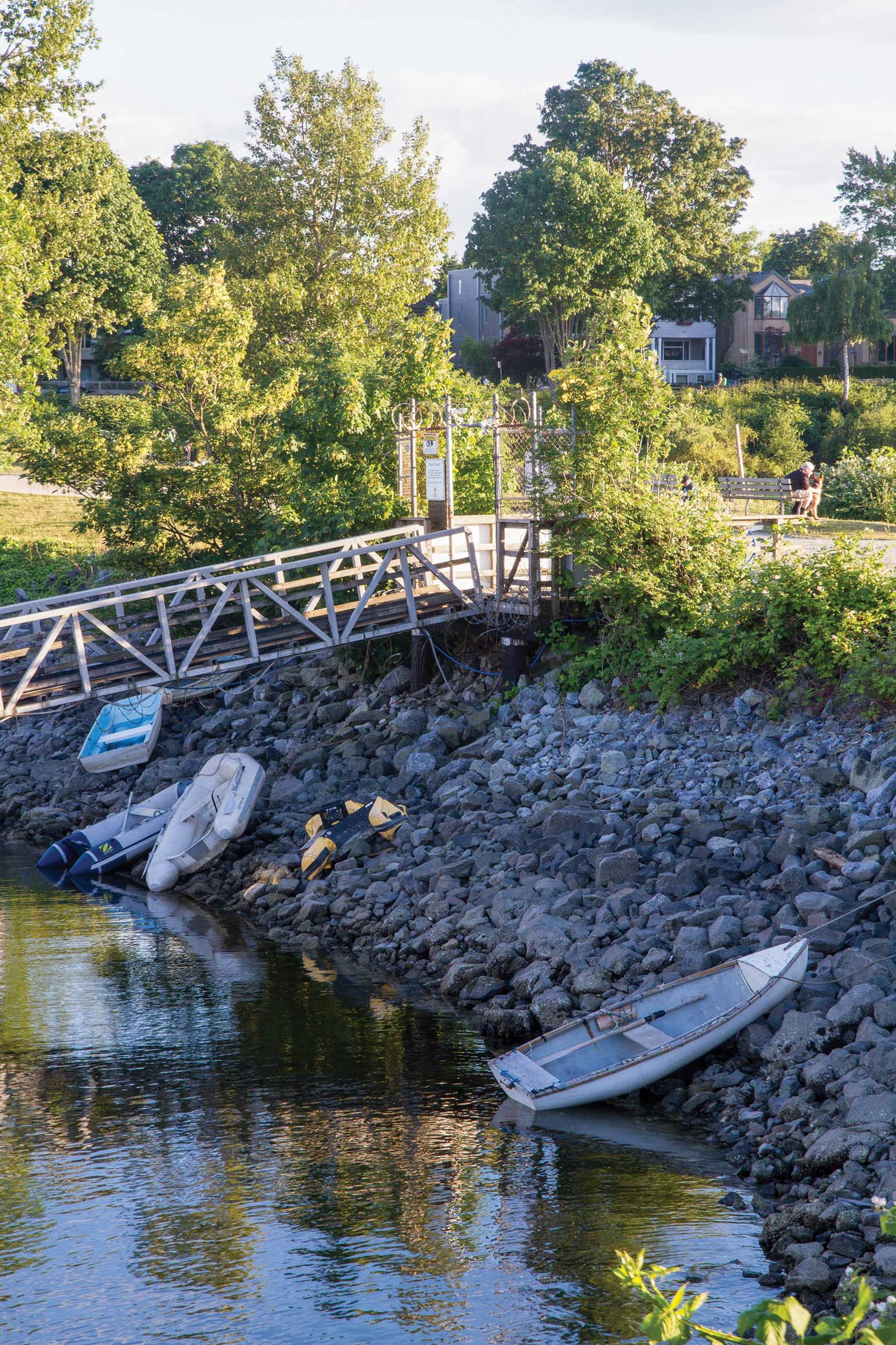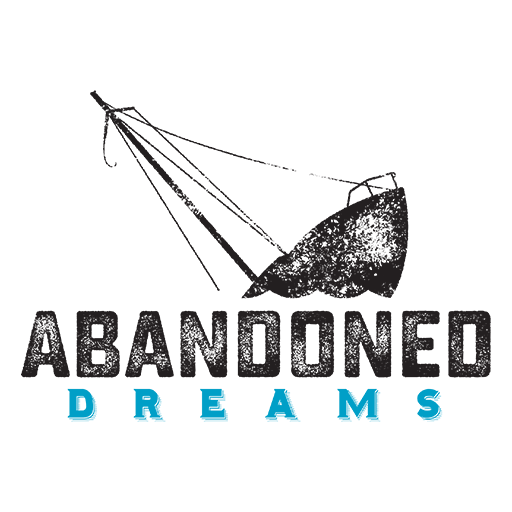
Living in Violation
When anchor-outs and liveaboards become outlaws.
Morning waves lap against the scuffed and sun-faded hull of a 28-foot sailboat. The occupants are waking; coffee (made with water rowed from shore in jerry jugs) is brewing on a propane stove, morning ablutions include the use of a composting toilet. Soon, we’re sitting outside sipping coffee as the sun warms the air and hits the solar panels, which provide the boat’s power. An eagle flies past and we hear the call of a raven in the trees on shore. She points out a seal swimming by, while he rereads the letter that tells them they have 10 days before they need to move on from this pretty harbour.
“We have jobs here, friends here,” he says (after asking me to keep their names and location confidential).” And if we stay, we become fugitives.”
Before the upsurge in derelict boats, the complaints about congested anchorages, and the concerns about sewage; before we decided that no one should get to live anywhere for free, and that views from gentrified communities were more valuable than people’s homes, our harbours were home to a special breed of British Columbians. These were the fishermen, sailors, tugboat drivers, writers, artists and scruffy dreamers who felt out of place on land and who ventured past the water’s edge and formed loosely knit communities.
We used to call them old salts—and their communities were ramshackle but picturesque. The boat owners were mostly harmless and quirky, and when you encountered one on the beach or in a bar you finally understood what the terms yarn and tall tale really involved.
The first time I heard endangered when referring to these liveaboard communities I considered it hyperbole. Randy van Eyk was detailing the fines, evictions and literal storms he’d weathered as a liveaboard, and was questioning if society as a whole wanted to see his entire community become extinct.
An unofficial spokesman for the plight of of BC’s liveaboards, van Eyk is the sort of guy who can jump from citing the marine act to philosophical musings and back without ever catching his breath. Not long ago we would have called him an eccentric, someone we embraced for his dreams and admired for the colour he added to the waterfront. These days he’s more apt to be described as homeless or a freeloader—a guy who ignored the rules and paid the price when his home washed up on a beach.
In truth, l think he’ s actually closer to David taking on the faceless bureaucracy of Goliath. An underdog who’s waded into an issue few have a grasp of—trying to make sense of why an effort aimed at cleaning up the environment, and removing dilapidated and abandoned boats has resulted in the destruction of entire nautical neighbourhoods.
Many point to gentrification in advance of the 2010 Olympics for the changes that came to False Creek. Citing environmental hazards, boating congestion problems and the waterway’s general aesthetic look, Vancouver sought a Memorandum of Understanding with the federal government, allowing the city to restrict boaters who took up residence in the sheltered harbour. “I think that it is improper that [liveaboards] continue to stay there [and] ignore our standards around pollution and sewage treatment,” former Vancouver councillor Anne Roberts told CBC News in 2005. Liveaboards and their supporters pointed out the irony, saying the city had a bigger role in the pollution than the boat owners that were being blamed did; with urban storm drains releasing sewage into the inlet after every heavy rain. They also wondered how exactly placing a time limit on a boat’s stay would control illegal dumping?
Despite the arguments, the police began to fine boaters who didn’t get the new permits and a 100 or so liveaboards were displaced by the decision.
In some ways the new permit sys tem was a test of the Vessel Operation Restriction Regulations (VORRs). This change to the Canada Shipping Act made it possible for communities to apply for restrictions to boating activities “in order to enhance the safety of navigation or to protect the environment and the public interest.”
Far from solving the problem though, van Eyk says the change made the issue more complex, putting the problem in the hands of city bureaucrats with out specialized maritime knowledge, pushing people from a safe harbour to an unsafe one, and setting a precedent for other communities, “The laws for shipping and navigation need to be the same nation wide. Instead vessels were seized and boaters were deported into storms. People died.”
While van Eyk can’t pinpoint specific deaths, one search of the headlines confirms that a handful of boats now blow ashore in English Bay during each storm season. In 2010 Van Eyk experienced this himself. When his permit expired, he weighed anchor and moved out of the harbour to the unprotected shores off Kitsilano Beach. Not long after, a wind storm arrived and 40-foot Tuesday Sunrise was one of eight boats that washed up on shore.
This may have been enough to make other boaters give up, but van Eyk is a throw-back to an earlier kind of live aboard; he’s on the water not because it’s the only place left to go, but because it’s the only place he wants to be. He spent years rebuilding Tuesday Sunrise and when his boat was back in the water he staged a protest in False Creek.
“Please Stop False Creek Genocide,” read the sign on his boat’s stern. Then he overstayed his anchoring permit and received two tickets for anchoring in False Creek without a permit. Tuesday Sunrise was seized.
“I used to have a legal right of safe harbour—so long as I’m not bothering anybody and I’m not a hazard to navigation,” van Eyk told CBC News in advance of a court date to argue his position. He says because the regulations are administered by Vancouver, they violate the Constitution Act, which gives Parliament “exclusive legislative authority” over navigation and shipping. He also believes his rights are being violated by rules that are, “banning an identifiable group of persons by calling them liveaboards.”
“I’m the ‘master of vessel’ not just a liveaboard.” He says, “We need those rights protected.”

Photo by Diane Selkirk.
The problem in our harbours predates 2010. I’d argue it goes back a couple of decades—to the proliferation of cheap fibreglass and end-of-life work boats, many of which have devalued until they’re almost worthless. With no easy way to sell or dispose of them, they’ve been abandoned, or become a refuge of last resort for the poor.
Liveaboard communities, filled with people who know what it means to be outsiders, have done what they can to absorb these refugees from land. But many will point out that some of the newcomers aren’t seafarers and that it’s often these boats that are the problem. “Good conduct is the boat owner’s responsibility,” van Eyk says. “Boats need to be maintained, they have to be operational and they can’t be left unattended.”
Nanaimo, Ladysmith, Port Hardy, Brentwood Bay, Squamish, Port Moody and Victoria are, like Vancouver, trying to get a handle on what BC New Democrat MP Sheila Malcolmson estimates is ‘thousands’ of abandoned boats on our coast and in our harbours. Boats can be cheap to buy but are expensive to maintain and moor, and very expensive to get rid of: Which is why the number of dilapidated boats along BC’s coastline is dearly on the rise.
More than floating eyesores, many of these boats are environmental hazards; threatening local fishing and tourism jobs. Long-time liveaboard Clive Pemberton, who takes great pride in keep ing his 1945 halibut boat, Trim, in great condition, says he’s encountered lots of people who bought in expensive boats and didn’t have the skills, money or grit to keep them afloat, “In Ladysmith one guy bought a 70-foot boat from the military for $3,500—it sat abandoned for five years”
He says that this sort of thing should never happen and that there needs to be minimum standards, otherwise everyone gets lumped together. Pemberton, who’s considering skipping his annual summer cruise up the coast because he’s afraid he won’t have a harbour to return home to, explains that rules are changing faster than boats can keep up with, “Boats are moving from harbour to harbour hoping to find somewhere they’re pennitted to stay.”
He speculates that even though boaters are an independent bunch—most true liveaboards would pay for permits and meet standards in exchange for safety and stability.
As van Eyk’s case makes its slow churn through our legal system, it’s clear he’s not alone in directing his arguments toward the federal government. My calls to various municipalities to enquire about their proposed anchoring bans were almost uniformly met with silence or finger pointing. Depending on the issue, a problem boat may fall under the BC Provincial Emergency Program, Transport Canada, the Coast Guard, BC Ministry of Forests, Lands and Natural Resource Operations, the Receiver of Wreck, Joint Res cue Coordination Centre Victoria or the local government.
With no one see ming to take the lead, the problem eventually falls to local harbour authorities who end up footing the bill to remove the worst offenders. To combat the problem, and bring ballooning wreck removal costs under control, the most common reaction see ms to be a local effort to ban all liveaboards and anchored boats. But while this may push the problem out of sight, we aJl know that the environment doesn’t end at municipal boundaries.
While communities struggle in isolation, and liveaboards attempt to come together in solidarity, MP Malcolmson puts the issue squarely back in the hands of the Federal Government. Looking to the south, where Washington State has developed a cradle to grave plan for boats, she created a private members bill design ed to attack the growing problem from all angles.
Bill C-352 would improve vessel registration (to make it tougher to dump a boat), set up a vessel turn-in program pilot project, support vessel recycling, and make the Coast Guard the lead agency responsible for directing the removal of abandoned vessels.
Malcomson was disappointed when the Liberals blocked her bill from being heard and instead opted to fast track MP Marc Garneau’s Bill C-64 the Wrecked, Abandoned or Hazardous Vessels Act. A bill Malcomson says could worsen the problem by simply criminalizing vessel abandonment without looking at the other issues.
She explains that until we rid our waterways of dilapidated and abandoned boats, and give poverty-level owners the chance to give up problem vessels in a program like ‘cash for clunkers,’ tax payers are going to continue paying more to remove boats by waiting for them to become wrecks.
In the upheaval, it’s the boaters who suffer. The anonymous boaters I met likened their lot to the Roma —or travelers—in Europe, except liveaboards are running out of places to go. In all my calls, I only found one ray of hope, a community that’ s trying to prove liveaboards and communities can work together.
ln Brentwood Bay, Ruth Malli the interim manager of community service explains her community opted to tackle their harbour problem by first recognizing the validity of the liveaboard community. “We wanted a process where all voices were heard,” she says. Malli explains that once all the stakeholders met it was clear the major complaint issues were sewage and harbour congestion not the liveaboards themselves.
From there, the community developed a management plan and their next step is to get a licence of occupation, issued by the province, which will give the district the authority to give liveaboards first priority for harbour moorings. The boat owners themselves will have to apply for a permit, carry wreck removal insurance, have holding tanks and pump out their vessels.
Malli acknowledges that the biggest hurdle for the poorer boat owners may not be paying the fairly minor fee for a permanent mooring, but in obtaining insurance. While derelict-looking vessels are not by definition dilapidated or unseaworthy, it’s clear that’s where they’re often heading and insurance companies will rarely cover them.
The hard part of the story is that we have to acknowledge that in amongst the people who live on the water out of love, there are those who are not seafarers, who live on these tired old boats, simply because they have no where else to go. They are the near homeless who are ill-equipped to manage the demands of liveaboard life and these are the vessels we may eventually see sunken in harbours or washed up on shore—hopefully without loss of life.
Not caring for these boats and the people aboard has cost us more than the price of removing wrecks or enacting legislation that will actually work. It’s cost us the vibrant and vital communities which once defined our port towns. Each time a harbour authority sweeps away an entire community of liveaboards—we lose one more link between land and sea. We lose colour and character and a little bit more of what makes us special. We lose some of the sweet weirdness of it all.
Key Points Explained
What is the Oceans Protection Plan?
The new program provides $ 5 .6 million over five years in grant and contribution funds to:
- Assist communities in the removal and disposal of existing high-priority abandoned and/or wrecked small boats posing a hazard in Canadian waters
- Educate small-boat owners about how to responsibly manage their end-of-life boats
- Support research on boat recycling and environmentally responsible boat design.
Critics say the plan is inadequate; only identifying 21 boats for immediate removal with the goal of assessing 26 others. Estimates for small vessel wreck removal put towing costs at $300 per hour, while recovering a flipped or sunken vessel costs in the range of $250 per foot. In 2016 it cost taxpayers $1.2 million to remove the Viki Lyne II from Ladysmith harbour.
What Is Randy van Eyk‘s Legal Argument?
van Eyk Claims his amendment to the Canada shipping act granting Vancouver sovereignty powers over shipping and navigation in False Creek violates section 91 #10 of the Constitution act of Canada. For this amendment to the Canada Shipping act to be constitutionally valid a constitutional amendment is needed (section 52). In place of the Constitutional amendment was the Memoranda of Understanding 2005.
What Is Bill C-64?
The Act respecting wrecks, abandoned, dilapidated or hazardous vessels and salvage operations (First Reading October 2017)
- Prohibits vessel abandonment unless it is due to a maritime emergency
- Prohibits the leaving of a dilapidated vessel in the same place for more than 60 days
- Authorizes the Minister of Transport or the Minister of Fisheries and Oceans to order the removal of a dilapidated vessel left on any federal property
- Authorizes the Minister of Trans port to take measures with respect to abandoned or dilapidated vessels and to hold the owner liable
- Establishes an administration and enforcement scheme
What Is BiIl C-352?
A Private Member’s Bill by MP Sheila (tabled April 13, 2017)
- Have the Coast Guard designated as the receiver of wrecks
- Develop a coast-wide strategy to manage wrecked, abandoned or dilapidated vessels in cooperation with local and provincial governments
- Get taxpayers off the hook by fixing vessel registration and developing a fee to help cover cost of vessel disposal
- Pilot a turn-in program at safe re cycling facilities to prevent vessels from becoming hazards
- Create green jobs by supporting local marine salvage
